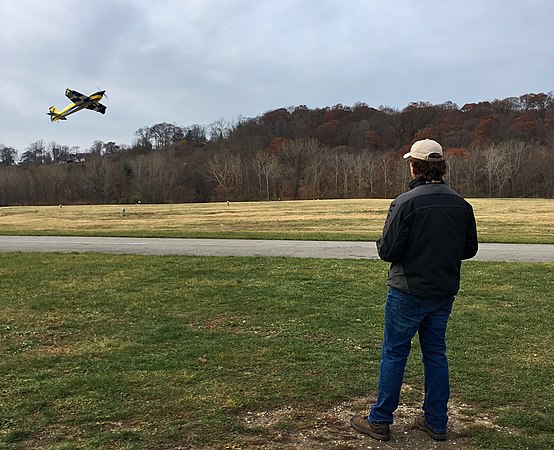RC Airplane
This is a work in progress, please contribute!
Building and flying radio controlled aircraft is a very satisfying hobby to pursue, but can be very complicated for a beginner. If you are serious about it, the best possible path to go down is to join a club and meet some experienced flyers who can help you.
Clubs
If you want to fly anything more than a small electric park flyer, it is almost essential that you join a club. The experienced hobbyists in a club generally extend a warm welcome to beginners, and make great efforts to help them learn about the models and equipment, and how best to install and set them up. They help newcomers avoid disappointment and painful and expensive mistakes. They generally offer first rate flying tuition at no expense beyond that of buying your R/C trainer and joining the club and your national organisation (see below).
Most clubs belong to a national body representing the hobby, so members are covered by insurance and safe flying conditions can be maintained. You can contact the following bodies for information on local clubs.
- USA: Academy of Model Aeronautics[1]
- Canada: Model Aeronautics Association of Canada [2]
- UK: British Model Flying Association[3]
- New Zealand: New Zealand Model Aeronautical Association [4]
- Australia: Model Aeronautical Association of Australia [5]
It's possible to learn to fly R/C planes without a club, but at the very least do find a friend to show you the ropes -- a little time spent in instruction can save hours of frustration. Flight simulators are becoming more and more popular amongst beginners. Those will be explained later in those lines.
Table of contents
General information
Getting a plane
- Building almost ready to fly kits
- Building from a kit
- Building from a plan
- Building SPADs
- Control surfaces and linkages
- Propellers
- Covering, painting and applying decals
- Balancing the plane
